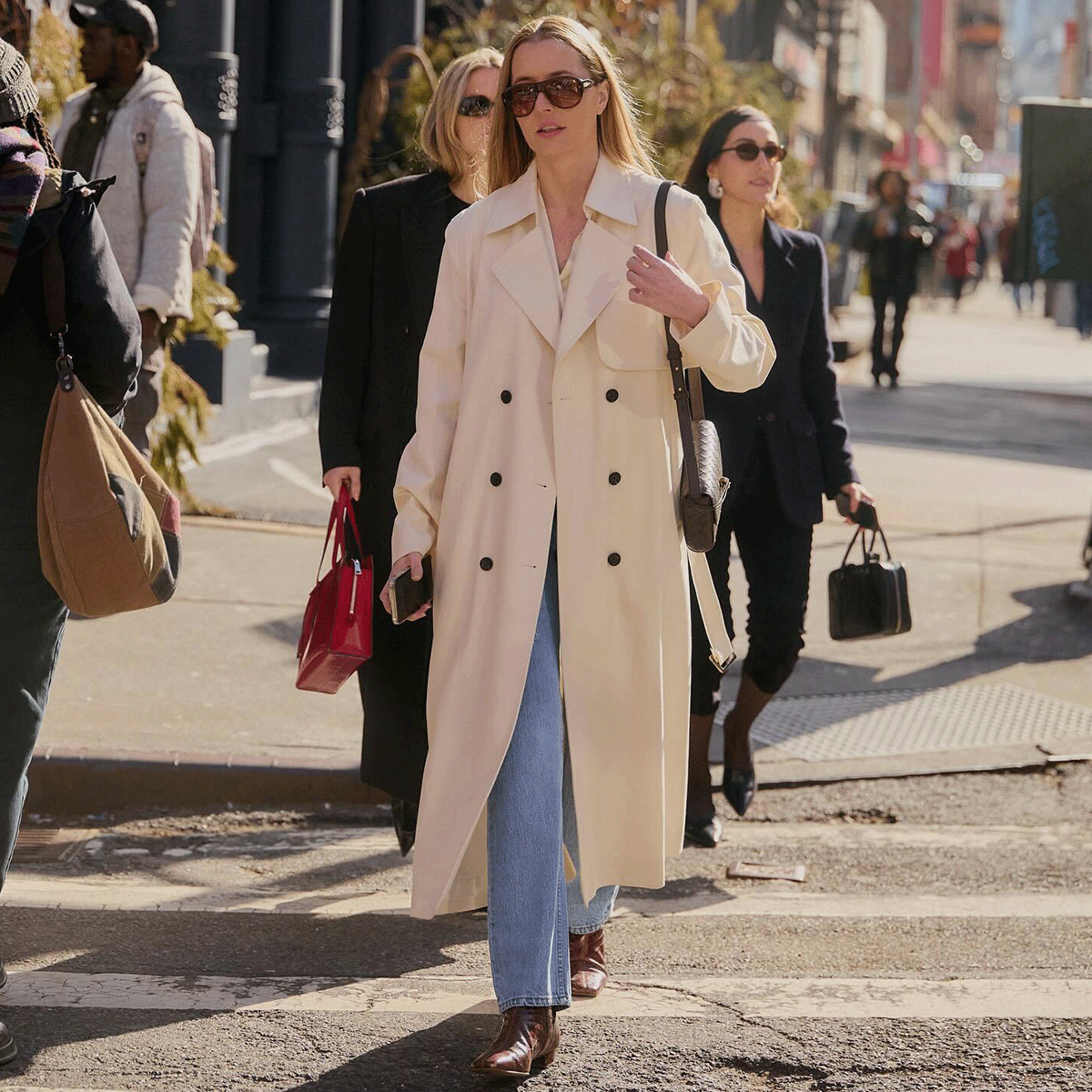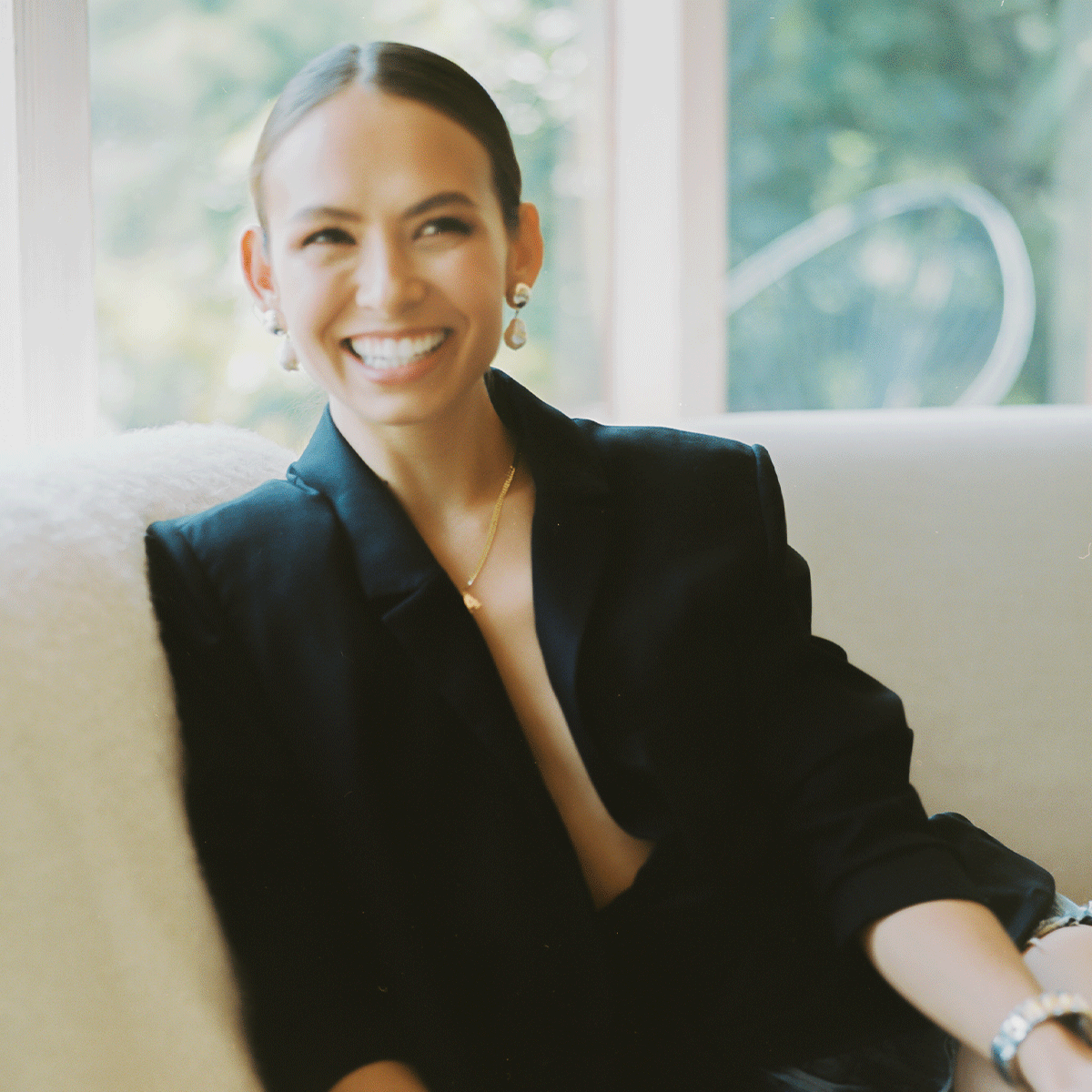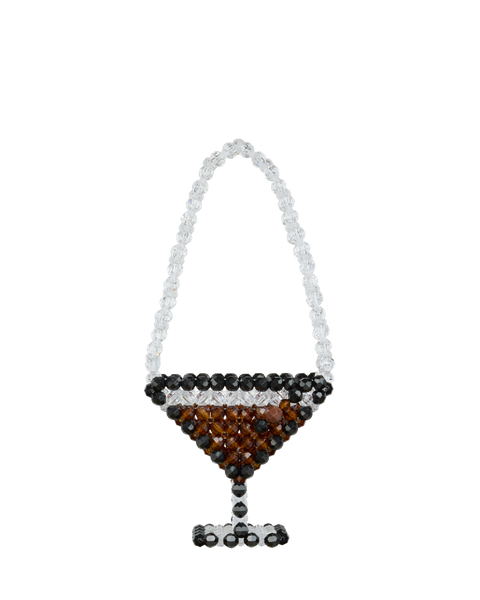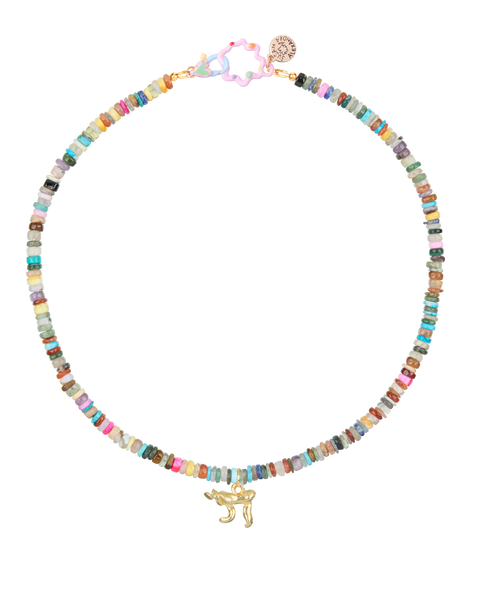The Susan Alexandra Founder Shares the Story Behind Those Iconic Beaded Bags
It started with a casual neighborhood stroll.

The founder of Susan Alexandra, Susan Korn, began making her now-iconic beaded handbags after a neighborhood stroll through Chinatown in New York City. "I passed by this little jewel box boutique and it was filled with beads. I went in there and I just had this vision for a bag I wanted," Korn said. "I asked her if she made bags. She didn't, but she said she could kind of make anything. I drew it out on a Post-It Note that she had there."
Since Korn began selling those recognizable accessories, she's expanded her line to include customizable jewelry, homeware, and more. On the latest episode of The Who What Wear Podcast, Korn shares how Susan Alexandra went from selling jewelry to becoming a household name, her styling tips, and more. For excerpts from their conversation, scroll below.
Welcome to The Who What Wear Podcast. Think of it as your direct line to the designers, stylists, beauty experts, editors, and tastemakers who are shaping the fashion-and-beauty world. Subscribe to The Who What Wear Podcast on Apple Podcasts and Spotify.
Can you give us a little background on how the Susan Alexandra brand came to be and catch us up on some of your biggest moments of the past few years?
I moved to New York when I was around 25, and I really didn't know exactly what I wanted to be. I knew I wanted to do something in fashion. I just didn't know what that meant. I think I had always been really afraid of being a designer because that meant you had so much responsibility and you had to be creative all the time and it just seemed like too much. I resisted that and I tried to work for other people for a long time, but I felt like I couldn't breathe. I felt like I was hiding something about me that was really pure and true.
That feeling led me to just dabble in different classes and experiment with a lot of things and I found that I love jewelry. I actually had always known that, but I really, really felt it. I started making these jewelry pieces, and then, slowly but surely, I would wear them around town and I would start selling them and not in a serious way, you know. Not where I could quit my day job.
Then very slowly, but surely, I built enough of an Instagram following, where I was contacted by someone who was like, "Oh, do you want to do wholesale?" I never felt so embraced and seen and it was just such a rush of emotions. This woman who discovered me, she really pushed me into starting a true, real business, where I could actually quit my day job.
I started with jewelry, and then pretty soon after that, I started making handbags and I started making these beaded bags because I was living in Chinatown in New York City and I found this woman just walking down the street. I passed by this little jewel box boutique and it was filled with beads. I went in there and I just had this vision for a bag I wanted. I asked her if she made bags. She didn't, but she said she could kind of make anything. I drew it out on a Post-It Note that she had there.
That's how I started making bags. It was kind of crazy because I posted it on Instagram and I'd already been selling jewelry for a couple of years, and that was my brand identity. Then, I posted this bag and I'd never had so much feedback in my life about people who wanted to buy stuff. The bags really changed everything. I started selling wholesale to the stores that I always dreamed of.
I'm curious if you have any tips for styling these more bold or whimsical pieces. How do you pull it off?
I just love taking in people who are true to themselves. The way you dress is so true to yourself and you're minimal, but you love little details, too, and personal details. The way I dress—and especially as I get older—I'm like, "What makes me feel really good and safe and happy?" So it is kind of a natural thing for me to do.
I would say that if you're experimenting and you want to show more of yourself in the way that you dress, I think jewelry is a really good way to do it. I always feel like whenever I meet a fabulous woman, like a woman, that you're like, "Who is she? What does she do? Is she a documentary filmmaker, owns a gallery in Mykonos…" or something. They're always these women who are wearing really interesting jewelry. I always size people up, and I feel like they can tell I'm staring.
For example, this is this new type of chain that we're playing with—or we just put out—it's called Vortex and it's all these different crystals. I'm wearing all these crystals that have all these different meanings next to my body and these are two vintage, diamond-paved pendants that I'm wearing that just look like they have a story.
Just wear things that you love. Just wear things that remind you of a beautiful time in your life or wear things that are good luck. I think that there are so many ways to make dressing interesting and fun and I think things that have meaning are so, so crucial for getting through life. Feeling supported, protected, safe, all the things that we need to feel.
Let's talk about some of the Judaica. I know this collection is close to your heart, so tell me about developing these pieces and being drawn to bring that into the Susan Alexandra universe.
Well, I'm Jewish, and I really love the culture of being Jewish. I love a lot of things about it, but I felt very limited when I was looking for menorahs and dreidels and businesses. I was like, "There's nothing here that I want to have in my apartment." Most of us, especially in cities, live in apartments where there's not a lot of space, so what we buy has to be on display.
I was like, "I want something that's so nice that I could keep it out year-round and I can look at it and, like, enjoy it even if it wasn't the holidays."
Then I was like, "Let's just make them really fun. Let's take the same spirit that we put into like our jewelry and our bags and put it into this very special category."
We started making really weird, funky menorahs, and people really, really liked them. It's been about three years, and this is our third collection, and I'm really surprised at how much it resonates with people.
This interview has been edited and condensed for clarity.
-
 Founder Violette Serrat on How Violette_FR Went From Having a Cult Following to Launching in Sephora
Founder Violette Serrat on How Violette_FR Went From Having a Cult Following to Launching in SephoraSchool is in session.
By Madeline Hill
-
 Stylist Brad Goreski on His Whirlwind Year of Red Carpet Looks for Demi Moore
Stylist Brad Goreski on His Whirlwind Year of Red Carpet Looks for Demi MoorePlus, how he brought body horror to the red carpet.
By Claire Schmidt
-
 The Top Trends From Fashion Month, According to Our Editors
The Top Trends From Fashion Month, According to Our EditorsThere's a lot to keep track of.
By Madeline Hill
-
 The White Lotus Costume Designer Shares How She Puts Together Those Iconic Looks
The White Lotus Costume Designer Shares How She Puts Together Those Iconic LooksPlus, how she got her start in entertainment.
By Madeline Hill
-
 Our Editor Shares Her 2025 Spring Fashion Predictions
Our Editor Shares Her 2025 Spring Fashion PredictionsPlus, the items you can incorporate into your rotation.
By Madeline Hill
-
 Why Sporty & Rich Founder Emily Oberg Is Launching a Sexual Wellness Line
Why Sporty & Rich Founder Emily Oberg Is Launching a Sexual Wellness LineIt's time for something new.
By Madeline Hill
-
 An Award-Season Debrief With Our Editors, From Trends to Top Looks
An Award-Season Debrief With Our Editors, From Trends to Top LooksPlus, we discuss the stylists who've been at the top of their game all season long.
By Claire Schmidt
-
 2025 Bridal Predictions From the Minds Behind Wiederhoeft and LOHO Bride
2025 Bridal Predictions From the Minds Behind Wiederhoeft and LOHO BrideMaximalism is in.
By Madeline Hill








